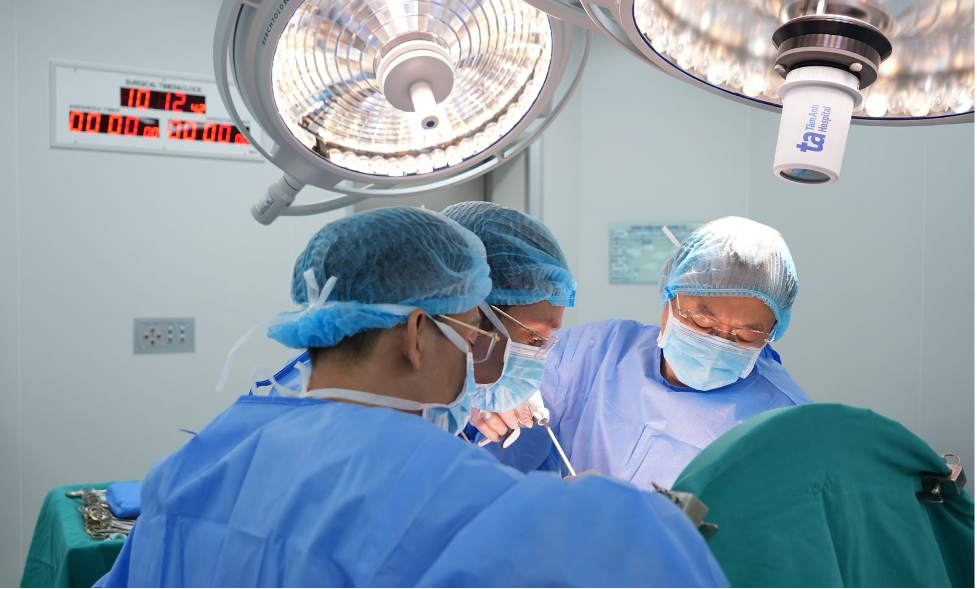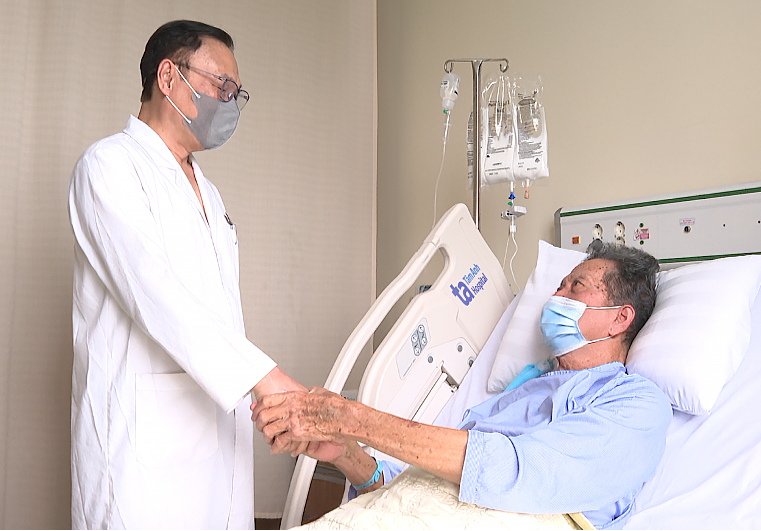A CT scan at Tam Anh General Hospital in Hanoi revealed a pre-existing lesion in Mr. Thinh's left semi-oval center (the area of white matter beneath the cerebral cortex) and dentate nucleus (the brain structure controlling movement and various cognitive functions). The scan also showed cerebral atrophy, atherosclerotic calcification causing stenosis of the right and left internal carotid artery cavernous sinuses, the right coronary artery, the left main coronary artery, and 70% stenosis of the left main coronary artery. Additionally, a tumor was discovered on the uncinate process of the pancreas.
Associate Professor Trieu Trieu Duong, Director of Surgery, explained that this was a malignant pancreatic head tumor obstructing the digestive-biliary-pancreatic tract and infiltrating surrounding structures, notably major blood vessels such as the superior mesenteric artery and vein, causing constant, severe pain. The surgery was predicted to be extremely complex due to the tumor's proximity to vital abdominal structures, the patient's advanced age, and his underlying health conditions, including a history of stroke and cerebral artery stenosis.
 |
Associate Professor Duong and the surgical team perform the Whipple procedure. Photo: Tam Anh General Hospital |
Associate Professor Duong and the surgical team perform the Whipple procedure. Photo: Tam Anh General Hospital
Following a multidisciplinary consultation, the team decided on a Whipple procedure to remove the tumor in the head of the pancreas, along with the duodenum, gallbladder, and a portion of the bile duct. This aimed to restore digestive and biliary function and alleviate the persistent pain.
"The overall complication rate for Whipple procedures is estimated at 30-50%," Associate Professor Duong stated, adding that in Mr. Thinh's case, the risk could be as high as 60-80%.
 |
Dr. Duong checks on Mr. Thinh before his discharge. Photo: Tam Anh General Hospital |
Dr. Duong checks on Mr. Thinh before his discharge. Photo: Tam Anh General Hospital
Before surgery, Mr. Thinh received comprehensive care to optimize his physical condition, manage his underlying health issues, and stabilize his vital signs. During the 7-hour operation, the surgical team removed the head of the pancreas, a portion of the stomach, the duodenum, the beginning of the jejunum, part of the common bile duct, the gallbladder, and surrounding affected tissue. They also performed lymph node dissection. After removing the tumor, the surgeons reconstructed the digestive tract by creating three anastomoses: pancreaticojejunostomy, choledochojejunostomy, and gastrojejunostomy.
Post-operatively, Mr. Thinh received epidural pain relief and began light activity in bed, combined with deep breathing exercises to prevent complications. 4 days after the procedure, he was able to walk, and after 19 days, he was discharged with good health and stable digestive function. At his two-week follow-up appointment, he was eating well and mobile.
Minh Anh
| Readers can submit questions about digestive diseases here for doctors to answer. |












